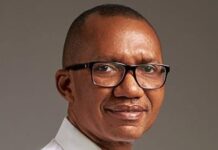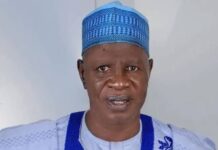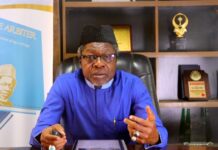BreakThrough
Nigeria is stupendously blessed with both human and natural resources making other countries green with envy. Nigeria is richly endowed with a variety of natural resources ranging from precious metals and various industrial stones such as Barites, Gypsum, Kaolin and Marble. Each of the 36 states and FCT has several mineral resources needing to be tapped.
For instance, Kaduna has over ten mineral resources such as Amethyst, Aqua Marine, Asbestos, Clay, Flosper, Gemstone, Gold, Graphite, Kaolin, Hyanite, Mica, Rock Crystal, Ruby, Sapphire, Sihnite, Superntinite, Tentalime, Topaz& Tourmaline. Other states like Nasarawa, Ondo, Plateau, Sokoto, Edo, Imo, Zamfara and Katsina states have varieties of mineral resources similar to those in Kaduna State.
In fact, each of the 36 states in Nigeria has a minimum of three mineral resources in appreciable quantity waiting for exploitation. Each of these mineral resources is reported to be in large quantity spread over large area. For instance, there are about 3 billon tons of iron ore deposits in Kogi, Niger states and FCT, 10 million tons of zinc/lead in Abuja, Kano and Cross River. There are over 2 million tons of rock salts and over 3 billion tons of coal deposits in Plateau, Enugu and Anambra states. Large quantity of gold is found in Zamfara, Sokoto, Oyo, Niger, Kwara and Kebbi states among others. These mineral resources provide tremendous investment opportunities for economic growth and nation building. If tapped, the country could be Eldorado.
In addition to mineral resources, there are other natural resources such as water and land resources. Nigeria has seven distinct climate zones, which provide average annual rainfall ranging from 700 mm in the far north (Sahel savannah) to 4,000 mm in riverine and mountainous areas in the south. Rainfall provides billion liters of water annually in addition to several other billions liters of water from River Niger. The river passes through the country and drains an average discharge of 5,589 m3/s into the Atlantic Ocean. River Niger with a length of 4,180 Km and drainage basin area of 2.1 million Km2 is the third largest river in Africa after River Nile and Zaire. River Niger has six major perennial rivers as tributaries crisscrossing the length and breadth of Nigeria making it the most endowed country with unlimited water resources available for development.
Land resources are similarly in abundance in Nigeria. The country has 91 million hectares of arable land with merely 50 % utilization despite the quantum of water resources, soil fertility, favorable topography and climates. Land and water resources are certainly important natural resources available for exploitation to develop the agricultural sector. Among the major minerals in Nigeria, the two most important and dependable resources are oil and gas as they constitute 90 percent of foreign exchange earning with all other economic contributors making the 10 percent. Oil also contributes about 70 percent of annual income to the three tiers of governments (Federal, States and LGAs).
Nigeria is the largest oil producing country in Africa. Experts have estimated that Nigerian oil and gas reserves are 23 billion barrels of crude oil and 160 trillion cubic meters of gas www.nigeria.gov.ng. The major part of oil deposits is situated in the Delta basin in Abia, Akwa Ibom, Bayelsa, Cross River, Delta, Edo, Imo, Ondo, and Rivers states. The deposits are multi-layered. The depth of productive layers on land is between 1500 and 2000 m while on the shelf is between 2500 and 3600 m. However, when the areas are multi-layer, the depth of productive strata on land is between 1500 and 2000 m while on the shelf is between 2500 and 3600 m. Many oil deposits in Nigeria have gas caps. The quality of Nigerian oil is of high grade with low-sulfur and high paraffin content. The Nigerian oil is attractive at the International market because of its quality; its gravity is 36 API for light types and 20-23 API for medium and heavy types. Despite oil massive contribution to the foreign exchange earnings, it nevertheless contributes a mere 9 percent of the Gross Domestic Products (GDP).
The analysis on the mineral resources in Nigeria indicates the level of underdevelopment of the resources with exception of oil, the highly dynamic and unpredictable economic sector. This means that with the exception of oil, other natural resources are mere potentials and not yet transform to reality that can propel the development of the nation economy. Potentials are like fertile land with adequate water for both crops and livestock productions left unattended and become vulnerable to infestation by dangerous reptiles. In any community or society, human resources are the driver of transformation of potentials into tangible reality. How capable are human resources in Nigeria to transform these potentials? What is the demography in Nigeria and its adequacy to meet the developmental challenges?
In 2015, population estimate for Nigeria was 186,988,000 with male population of 95,253,000 and female population of 91,734,000 and population density of 201.3 per square kilometer. Today, Nigerian population is estimated to be 201,102,939 making the country to be the 7th most populous country in the world. The six countries with more population than Nigeria are China, India, USA, Pakistan, Indonesia and Brazil.
At the time of the Nigerian independence in 1960, the country recorded a total population of 45.2 million people and then Nigeria was 13th most populous country in the world. With average population growth rate of 2.533 percent from 1960 to date, Nigeria moved upward to occupy the 7th position and is still moving with this (2019) year’s growth rate of 2.6 percent. This growth rate is higher than growth rates for Pakistan 1.88%, Brazil 0.72%, Indonesia 1.03% and USA 0.71%. From 1960 to 2019, Nigerian population was increased by 444%.
Today, Nigerian population is equivalent to 2.6% of the total world population meaning that one person out of 39 people in the World is a Nigerian. In the next thirty years, Nigeria will have an estimated population of 450 million people and will occupy the 3rd position of the top most populous country in the World after India and China.
Interestingly, more than 60 percent of Nigerian population is under the age of 24 years. The rate of population growth in Nigeria is “one birth in every four seconds and one death in every fourteen seconds”. This demographic analysis clearly shows that Nigeria is tremendously endowed with human resources. How qualitative are the human resources?
The major qualitative indicator of human resources in any society is the level of her human capital, what is the level of human capital in Nigeria? Human capital refers to the stockpile of competencies, skills, knowledge and personalities attribute embodied in individuals. These attributes are responsible for the creation of qualitative labor force with appreciable economic, social and personal values. Labor is the most important factors of production. Human capital is therefore a primary factor, which converts all resources for the use and benefits of mankind and nation development.
World Bank defines human capital as “the knowledge, skills, and health that people accumulate over their lives”. How is human capital developed? Human capital is developed by massive public and private investments in health and education of the young people. Human capital is evaluated using five indicators periodically. The indicators are “child survival, school enrollment, quality of learning, healthy growth and adult survival”. Nigerian human capital index in 2018 was averaged 0.34 as reported by World Bank (https://www.undispatch.com/chart-of-the-day-the-world-bank-ranks-each-county-based-on-its-human-capital/).
This means that the earning potential of Nigerian youngest generation over their lifetime is only 34 percent of what it could be with complete education and good health. In other words, the country is losing 66 percent of its productivity by not fully investing in human capital. While the result of the World Bank ranking of Nigeria human capital index among the 157 countries looks discouraging, dispiriting and gloomy, the reality shows that several Nigerians are creating waves and excelling in several human endeavors globally.
This may not be unconnected with the large human resources that keep growing in the country. The relative few Nigerians with high human capital index are large enough to make the name of Nigeria rings bell in every continent in the World. Perhaps this may be the positive aspect of population explosion. These few Nigerians are endowed with creative capacities and innovative thinking and thus, impacting positively on the nation image home and abroad. What is the creativity in these few Nigerians? What is the missing link between these Nigerians and Nigeria?
Read also: Nigeria and Nigerians’ Creativity – the Missing Link (II), by Professor MK Othman
Professor Othman is the Executive Director of National Agricultural Extension and Research Liaison Services (NAERLS), ABU Zaria.
Follow the Neptune Prime channel on WhatsApp:
Do you have breaking news, interview request, opinion, suggestion, or want your event covered? Email us at neptuneprime2233@gmail.com




